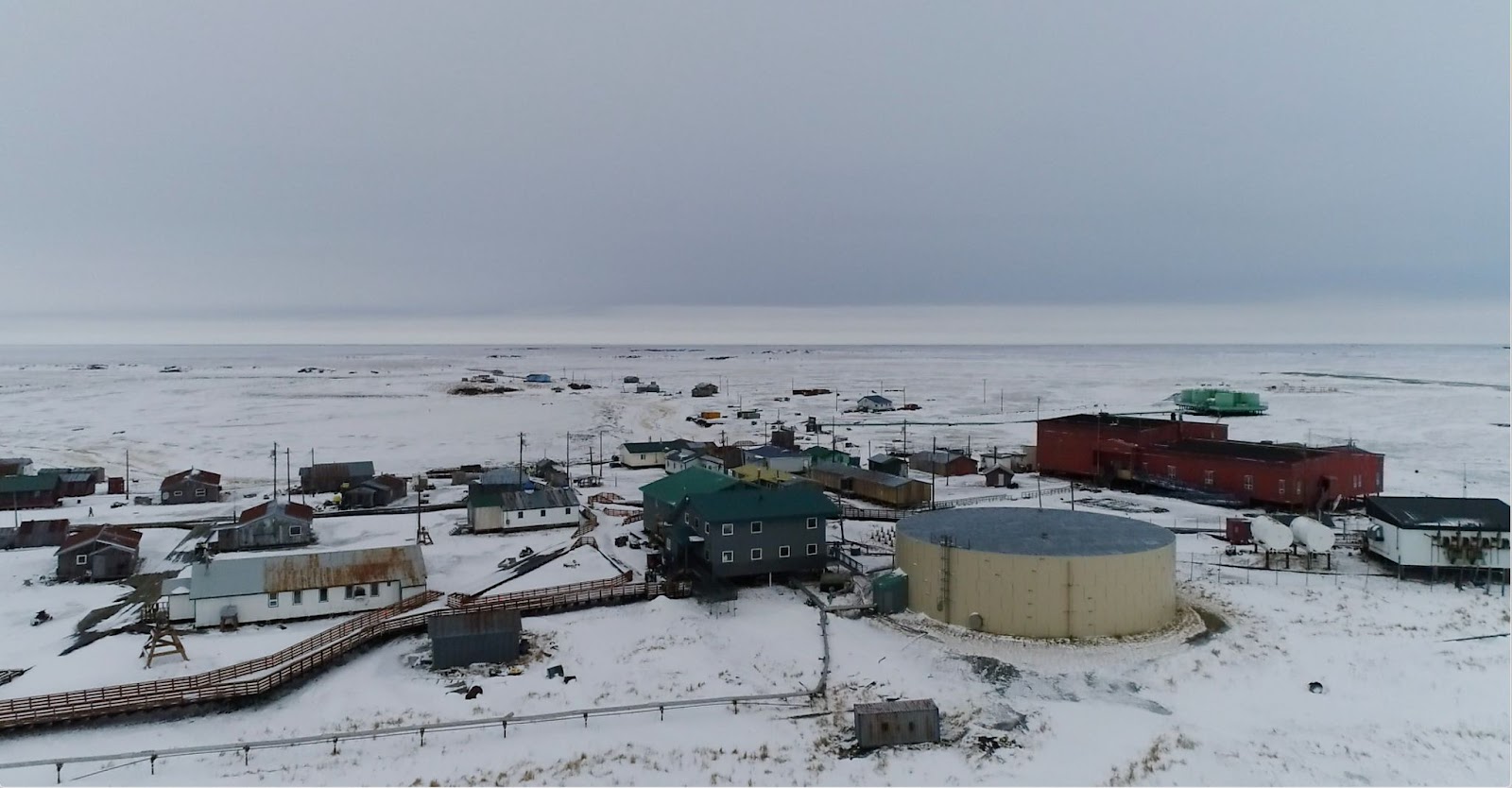Food-Energy-Water Nexus Factors that are Different in Alaska
July 15, 2022

Kongiganak on Alaska’s Yukon-Kuskokwim Delta is not connected to any other community’s water or energy generation or distribution systems.
FEW, short for the food-energy-water nexus, is one of those buzzwords that you see floating around in a lot of research literature. It’s about how food, energy, and water systems are all interdependent.
Consequently, we humans are better off if we design and develop FEW infrastructures together, so they can be optimized as a whole rather than as three independent systems. A classic example of this in the Lower 48 is where large dams can control the flow of water, determining how much can provide hydroelectricity, how much can flow to agriculture, how much flows to fill reservoirs for drinking water, and how much is left to support natural habitats. Food, water, electricity: It’s all connected.
However, the FEW nexus in Alaska looks quite a bit different. First of all, electrical systems are often islanded from each other. The Lower 48 states are all electrically connected to each other. When the wind blows strongly at a wind farm in Kansas, and produces more than is needed, excess power can be exported to Colorado. In Alaska, our 200-or-so communities are disconnected not only from other states but also from each other. Each must maintain its own islanded electrical grid, called a “microgrid.”
Second, water systems are not limited by water resource availability in Alaska. We are blessed with plentiful clean, fresh water. The challenges to water availability are in the construction of water delivery and treatment systems in harsh, unstable terrain, and keeping piped water unfrozen during winter months.
Third, food systems are also very different in Alaska. Alaska does not have a long history of agriculture; 95% of the food in grocery stores is imported from Outside. There is also a strong culture and practice of obtaining wild foods via hunting, fishing, whaling, and harvesting of berries and other wild plants. Therefore, a lot of our food security is not tied to production, but rather to maintenance of shipping routes and travel routes for obtaining wild foods. However, a recent surge in development of small farms and community greenhouses has been very exciting, and ties into energy usage for both production and storage.
The MicroFEWs team, comprised of researchers from UAF, UAA, University of Calgary, Stanford University, and working contractors outside of academia and funded by the National Science Foundation, has spent the last several years seeking approaches to helping communities in Alaska and other remote islanded microgrids optimize their FEW systems. We’ve specifically looked at FEW systems through the lens of community renewable energy installations, given the already existing and growing number of installations around the state. As the price of local, sustainable and renewable energy decreases, many communities are interested in these resources to increase their overall community security. Among the possible solutions that can be powered by renewable energy sources are Arctic-designed greenhouses, modular water treatment systems that are installed in individual homes instead of at a community scale, and advanced algorithms that can optimize usage of variable renewable energy generation, such as wind and solar.
You can learn more about renewable energy resources in Alaska, what our team has learned and some of the tools we’ve developed in an upcoming interactive and fun online Edx course.
This project is funded by the National Science Foundation Award #1740075 InFEWS/T3: Coupling infrastructure improvements to food-energy-water system dynamics in small cold region communities: MicroFEWs.
Please see the MicroFEW website for more information.


